Monotype technique
Following posts on various social media accounts, I’ve been asked a number of times recently about how my monotypes are produced.
The short explanation is: I simply smudge ink around until it looks like something.
Usually but not always, the image is flipped horizontally and changed to greyscale in Gimp (an image manipulation program similar to Photoshop). I will more often than not make adjustments to the perspective for the purposes of structuring the composition to my tastes. Sometimes these adjustments are made on the plate as I draw / paint / smudge the image. The more comprehensive explanation is that oil based intaglio ink is applied to and removed from a 3mm thick sheet of white acrylic using all sorts of things including scrim, leather dabber, roller, card, brushes fingers, palms of hands, kitchen roll, cocktail sticks etc. I also use distilled turpentine to remove highlights which I want pure white. No preliminary under-drawing is done… the image is applied directly to the plate and any draughtsmanship issues are attended to as I paint / draw / smudge with the ink. See below for evidence of where ink has been lifted using fingers, brushes, kitchen roll, mount board, cocktail sticks and the palms of my hands. When I’m satisfied that there may be a half decent print (and there is seldom, if ever, any certainty about it with monotype printmaking), I put it through the press, just once…I never re-ink the plate and run the plate through again over the first impression. It is only recently that this even occurred to me. I might be tempted to do this at some stage but at present I have no desire to do so.
Fingers, card, cocktail stick, brushes and scrim used:
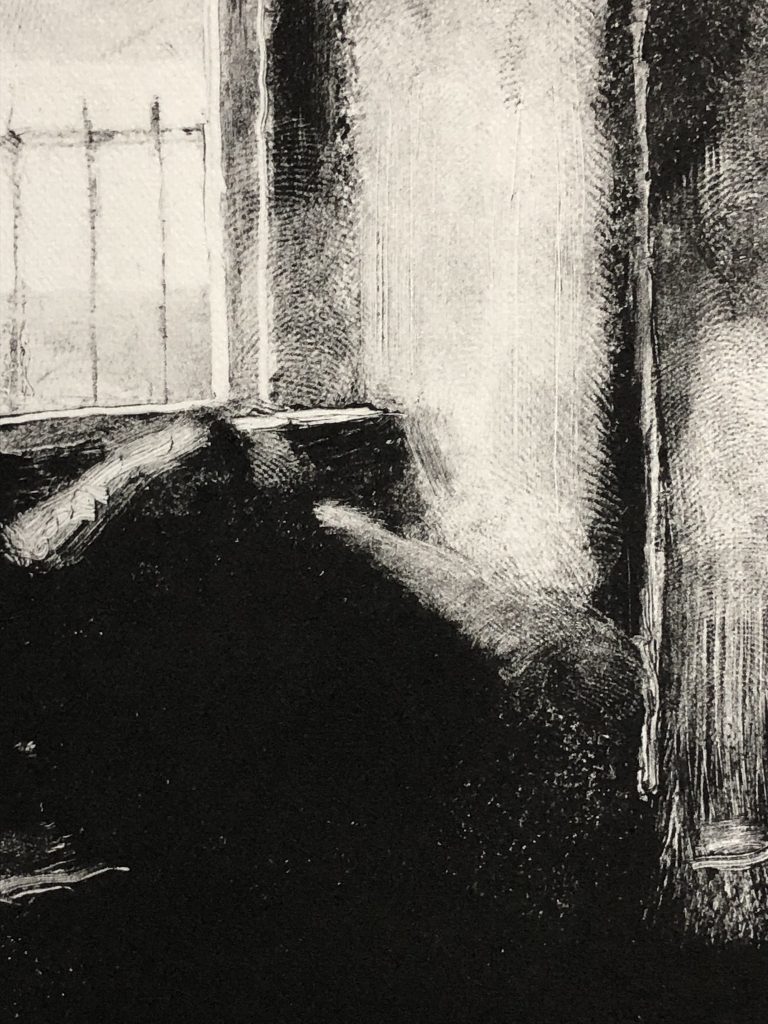
Fingers, card, cocktail stick, brushes and scrim used:
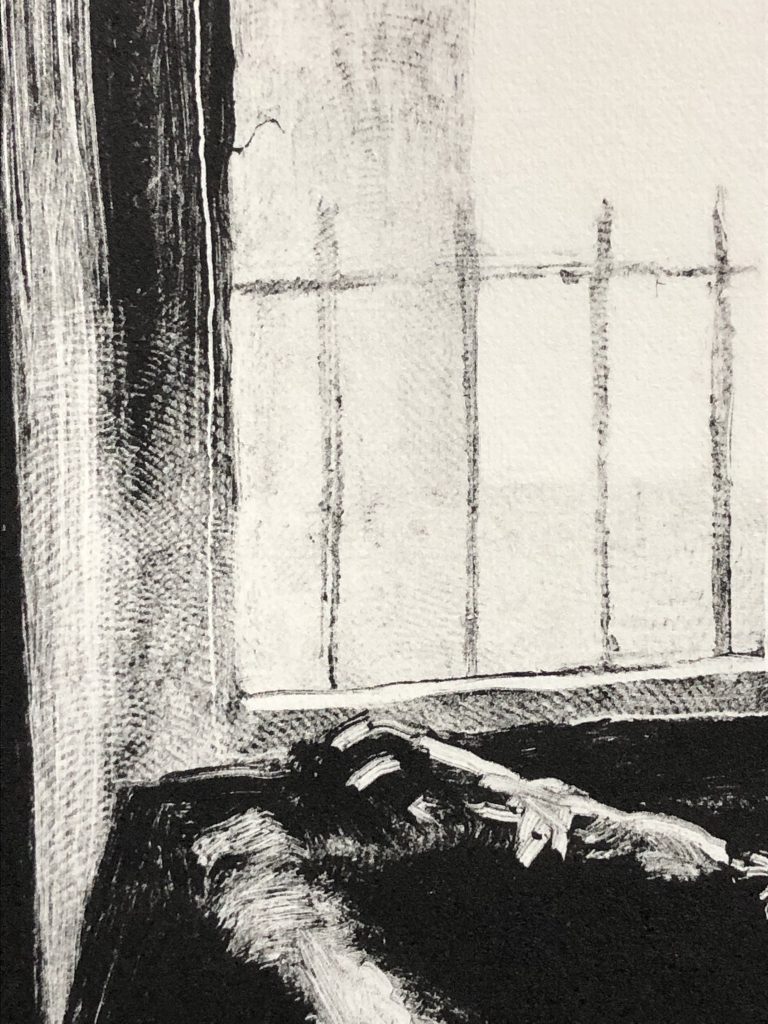
Palm of hand(s):
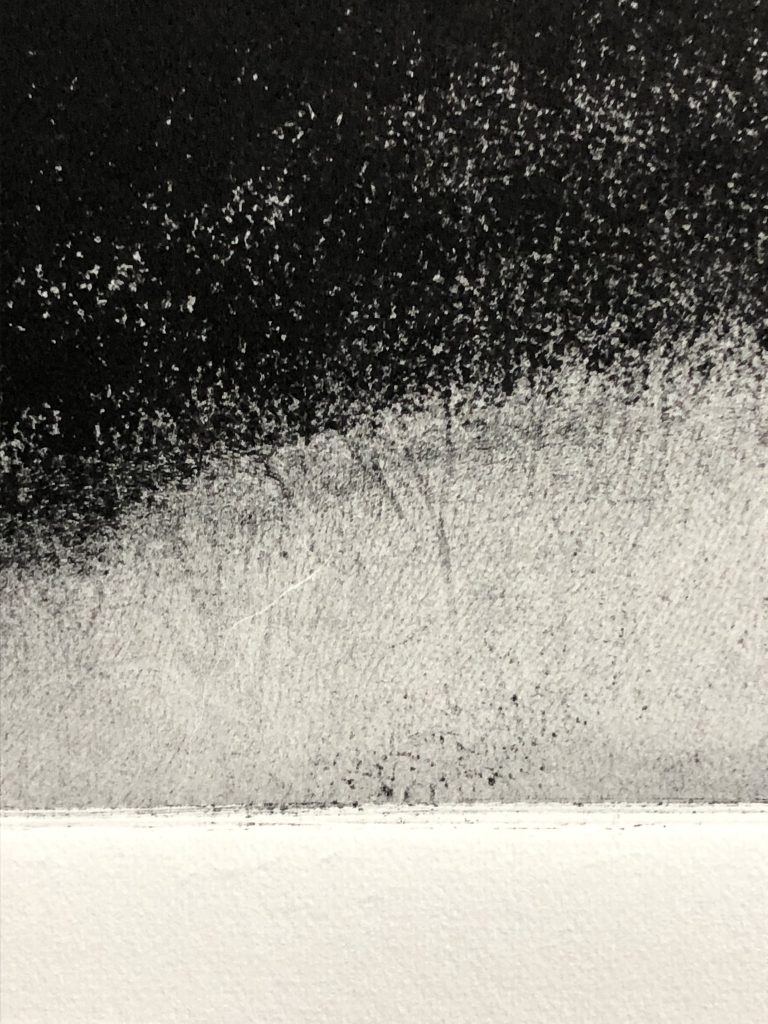
Here is the complete monotype:
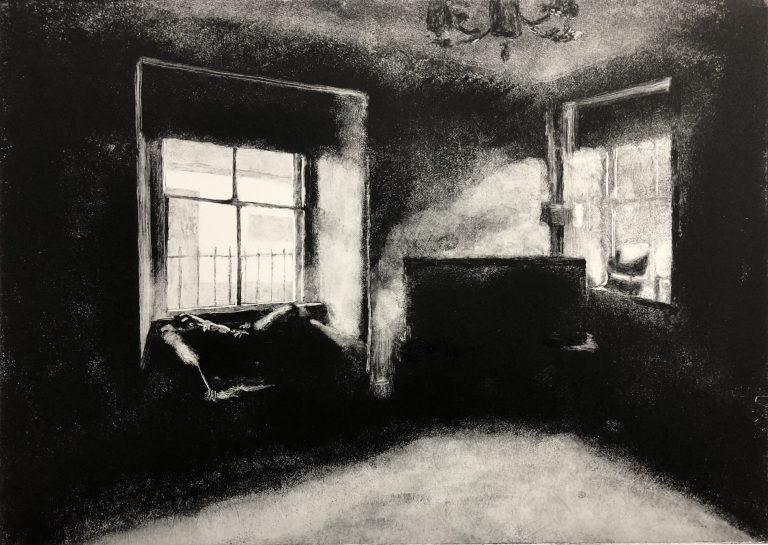
Occasionally, I will determine that the print requires further development and I will work into the print using one, some or all of the following; oil based intaglio ink diluted with distilled turpentine, conte chalk and oil paint. When completed I call the print a “Monotype and mixed media”, please see below:
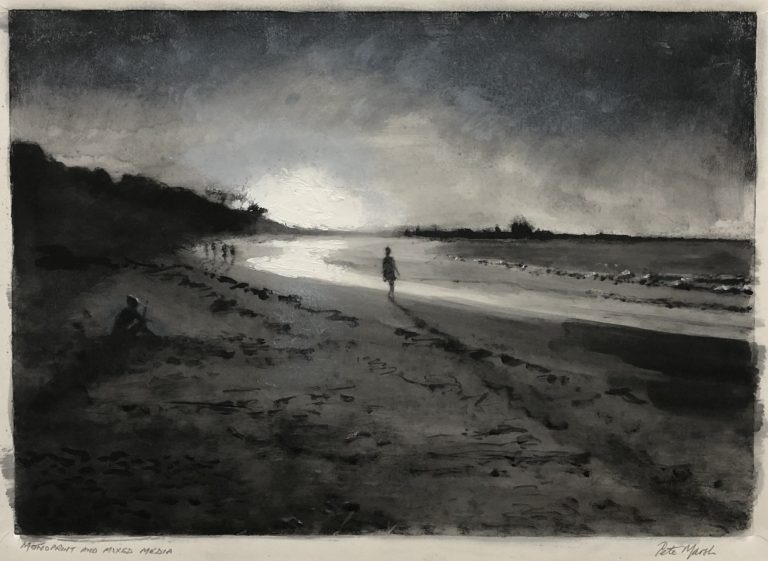
On other occasions I decide that I will take a second impression. The pressure on the press will be increased as most of the ink will have been lifted by the first impression. Sometimes this ghostly impression is deemed enough whereas on other occasions it will be worked into in with mixed media. These second impression is referred to as “Monotype (2nd impression)” or “Monotype and mixed media (2nd impression), please see below:
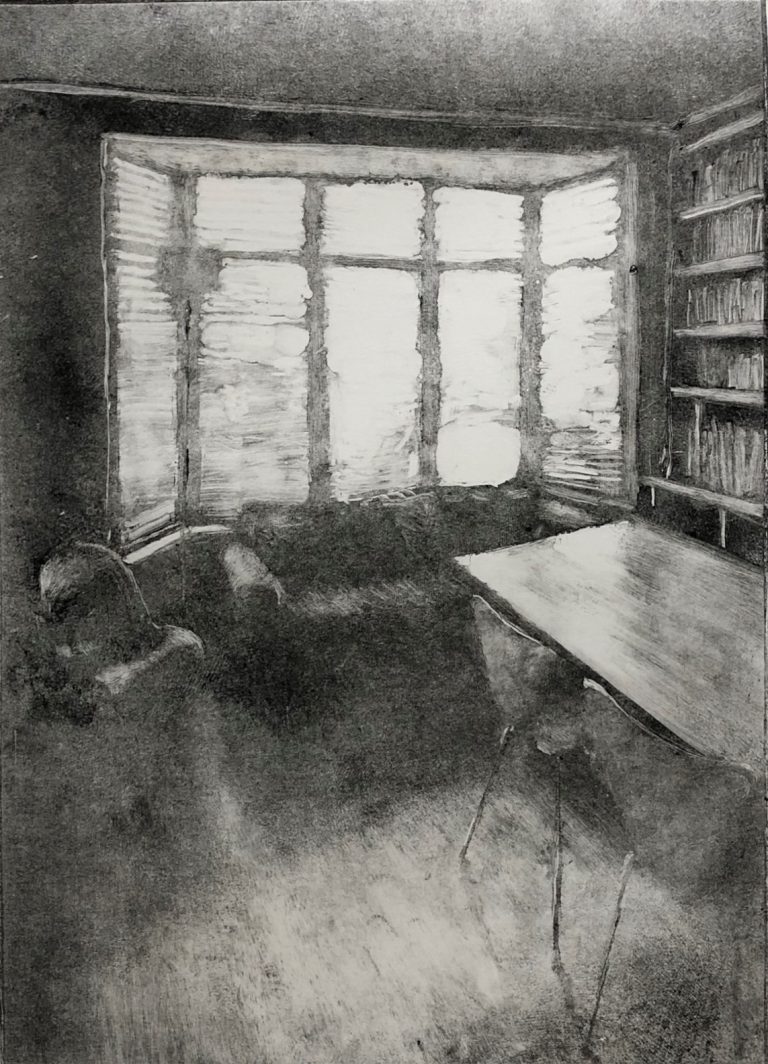
I fully understand that for some printmaking purists, this “tampering” with the origin print is an anathema! Nonetheless, I enjoy the results of these reworked monotypes and as a painter and printmaker it seems quite natural to me to combine painting with printmaking. After all, the ancient Greeks used to paint their sculptures!
